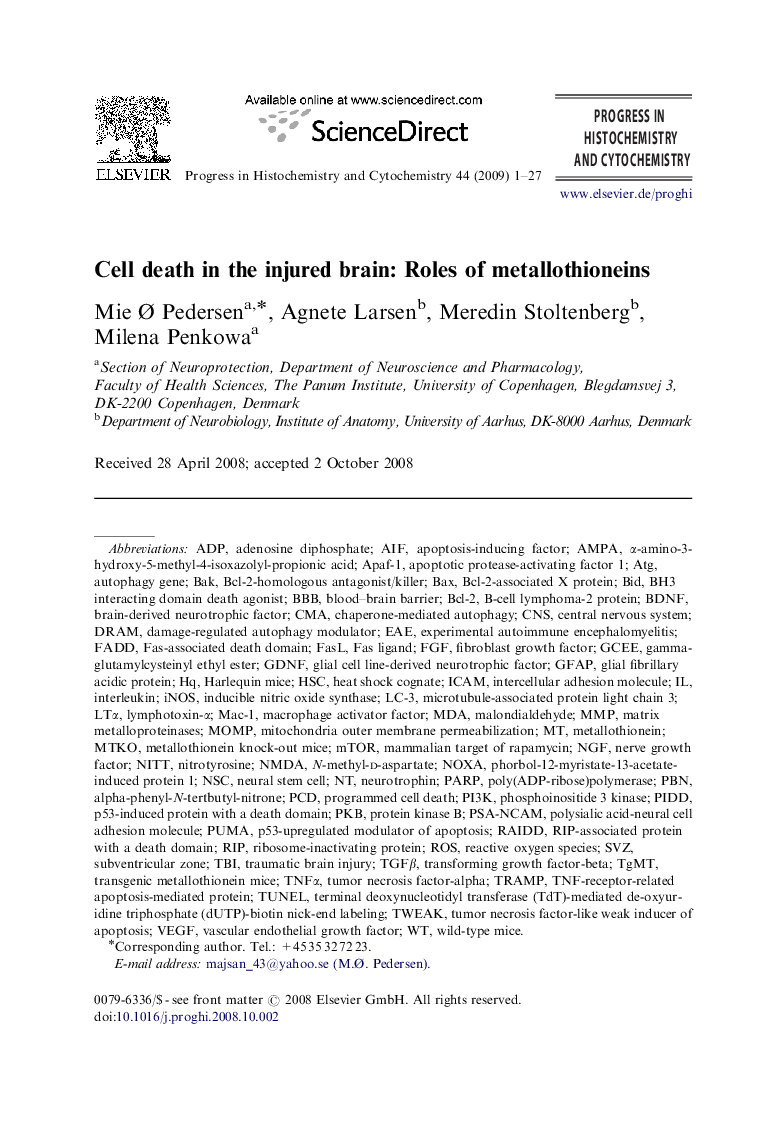| Article ID | Journal | Published Year | Pages | File Type |
|---|---|---|---|---|
| 2019023 | Progress in Histochemistry and Cytochemistry | 2009 | 27 Pages |
Abstract
This paper provides an overview of the TBI pathophysiology leading to cell death and neurological impairment. We also discuss endogenously expressed neuroprotectants and drug candidates, which at this stage may still hold the potential for treating brain injured patients.
Keywords
RAIDDp53-upregulated modulator of apoptosisphorbol-12-myristate-13-acetate-induced protein 1PBNFGFBcl-2SVZiNOSFADDAPAf-1tumor necrosis factor-like weak inducer of apoptosisMDAPARPAMPAATGTBIADPN-methyl-d-aspartateEAENGFGDNFNMDAPSA-NCAMNSCPIDDPI3KHSCMMPTWEAKLTαTNFαICAMLC-3CMAGFAPdamage-regulated autophagy modulatorPCDmTORDRAMPKBTGFβChaperone-mediated autophagyBDNFBH3 Interacting Domain Death AgonistROSadenosine diphosphateTraumatic brain injuryexperimental autoimmune encephalomyelitisAIFNoxainterleukinBaxtransforming growth factor-betaTRAMPtumor necrosis factor-alphaTUNELFas-associated death domainCNSmicrotubule-associated protein light chain 3BBBBlood–brain barrierNeural stem cellinducible nitric oxide synthasecentral nervous systemheat shock cognateApoptotic protease-activating factor 1apoptosis-inducing factorFas LigandFasLVascular endothelial growth factorVascular Endothelial Growth Factor (VEGF)nerve growth factorfibroblast growth factorGlial cell line-derived neurotrophic factorBrain-derived neurotrophic factorphosphoinositide 3 kinaselymphotoxin-αmalondialdehydeMOMPMetallothioneinMatrix metalloproteinasesProgrammed cell deathsubventricular zonewild-type miceintercellular adhesion moleculeMac-1Neurotrophinnitrotyrosinemammalian target of rapamycinRIPBcl-2-associated X proteinGlial fibrillary acidic proteinRibosome-inactivating proteinprotein kinase BBAKpoly(ADP-ribose)polymerasePUMABIDReactive oxygen species
Related Topics
Life Sciences
Biochemistry, Genetics and Molecular Biology
Biochemistry
Authors
Mie à Pedersen, Agnete Larsen, Meredin Stoltenberg, Milena Penkowa,
